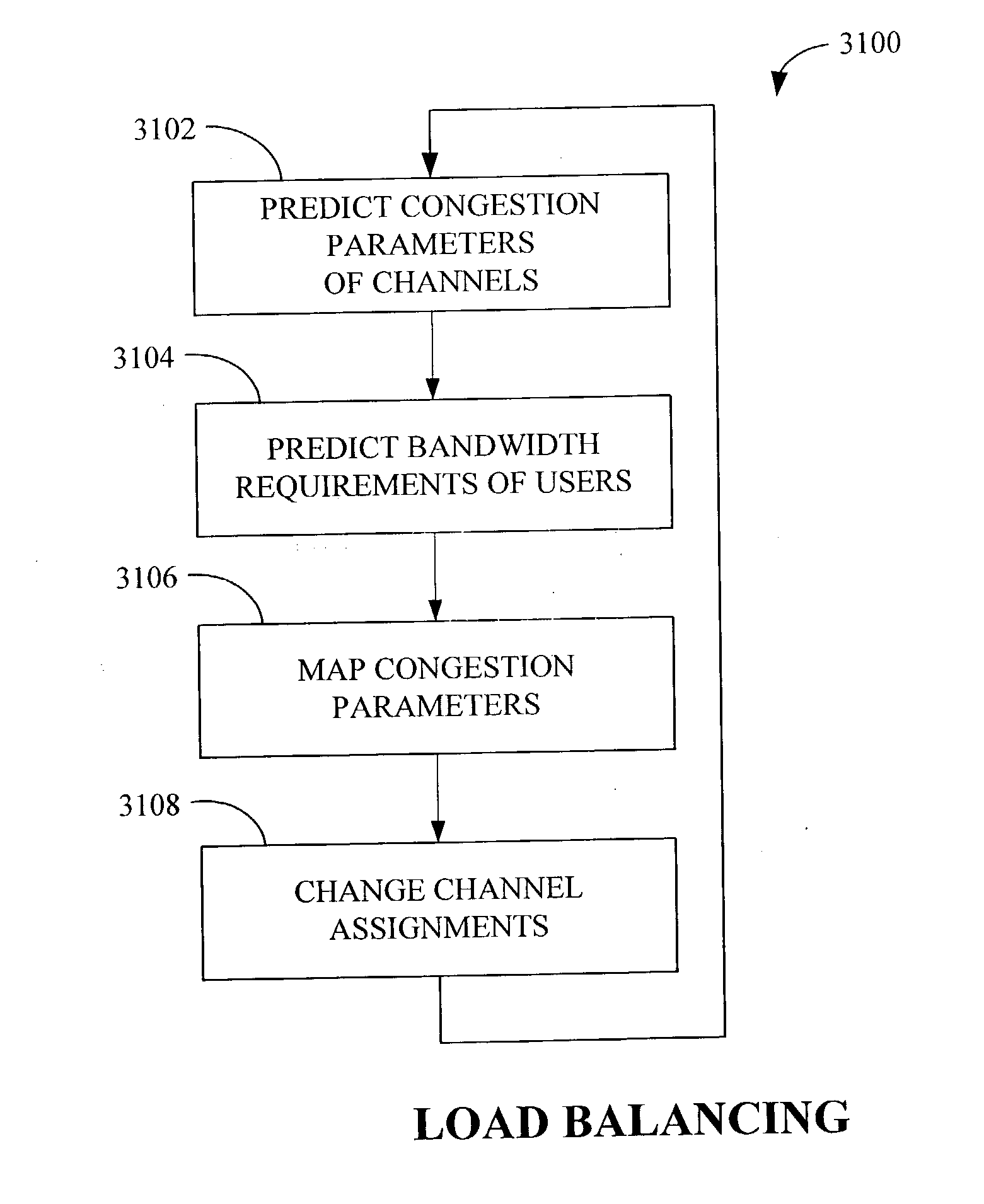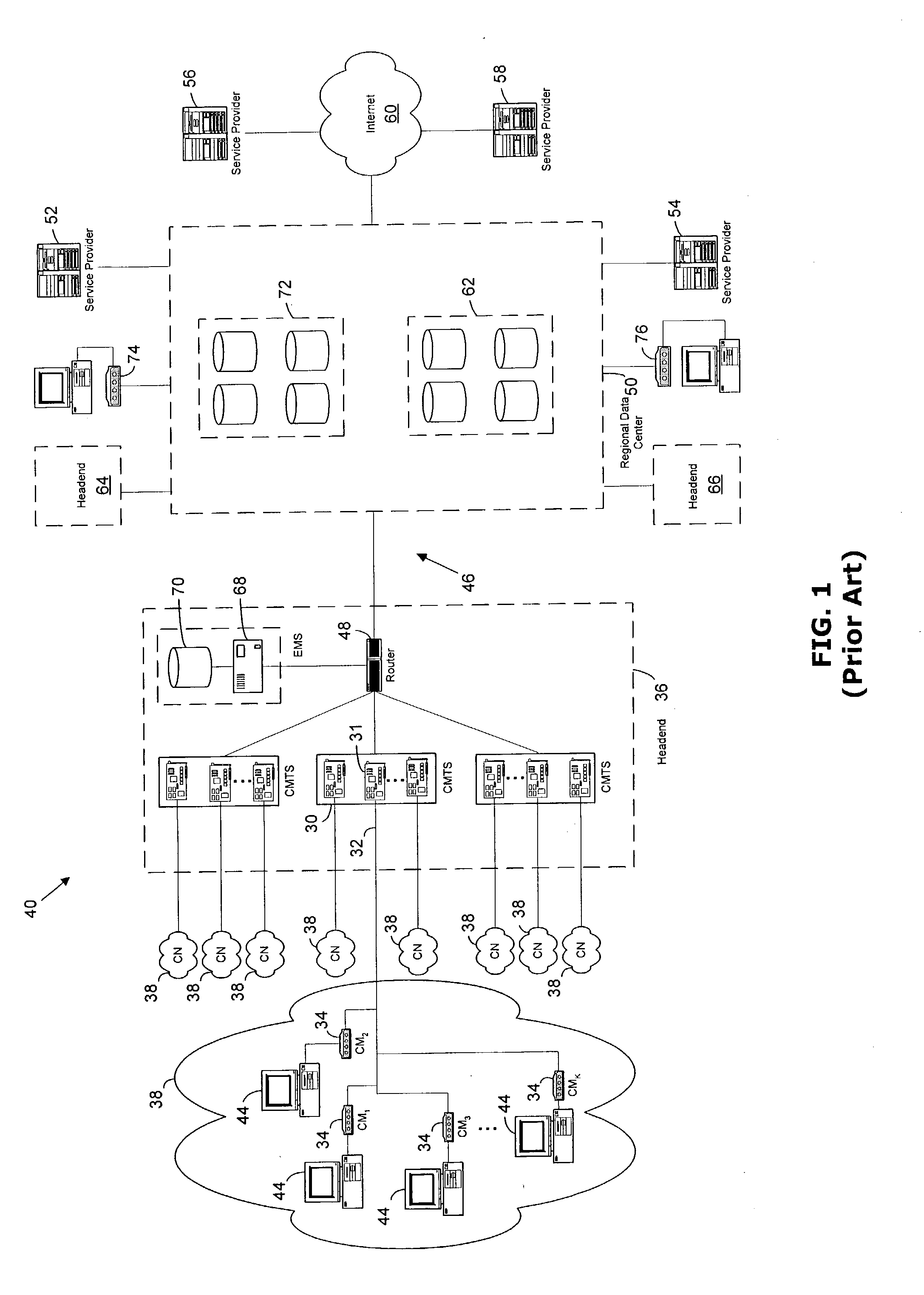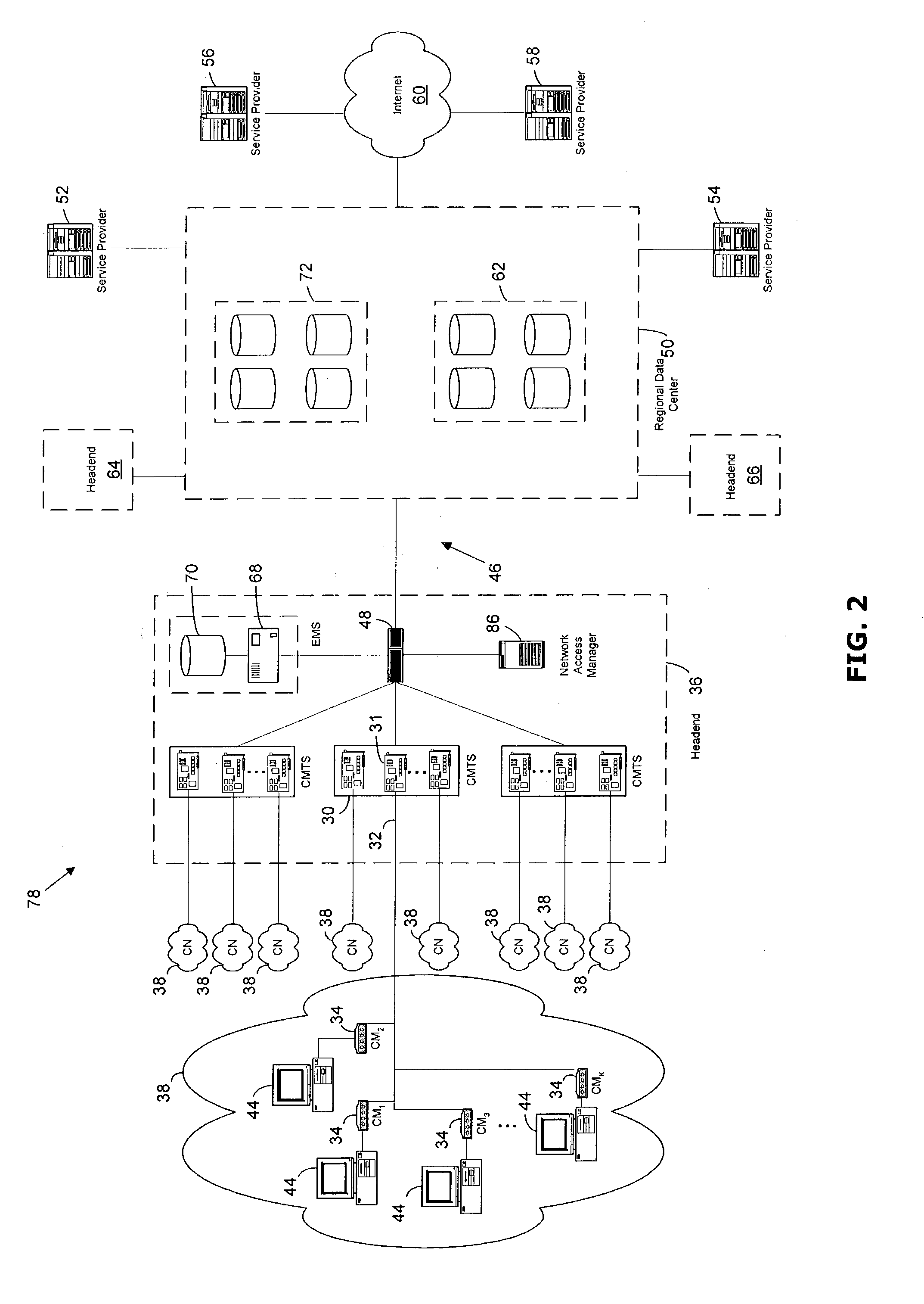Apparatus and methods for incorporating bandwidth forecasting and dynamic bandwidth allocation into a broadband communication system
a technology of dynamic bandwidth allocation and broadband communication system, applied in the field of apparatus and methods for incorporating bandwidth forecasting and dynamic bandwidth allocation into a broadband communication system, can solve the problems of affecting the performance of users on that channel, applications and internet services cannot be adequately provided, and rarely will a single user have available for use a large portion of the entire bandwidth
- Summary
- Abstract
- Description
- Claims
- Application Information
AI Technical Summary
Benefits of technology
Problems solved by technology
Method used
Image
Examples
Embodiment Construction
[0065] In the following detailed description, numerous specific details are set forth with regard to preferred embodiments of the present invention in order to provide a thorough understanding of the present invention; however, it will be apparent to ordinary artisans that the present invention may be practiced without all of these specific details. Well-known structures and devices also are shown in block diagram form, the specific details of which are not considered a necessary part of the present invention. Furthermore, as will become apparent to ordinary artisans, the present invention may be embodied in or performed by hardware, firmware, or software, or various combinations thereof.
[0066] As described above, a conventional DOC Network 40 is shown in FIG. 1 and includes a plurality of Cable Networks 38, with a particular Cable Network 38 being illustrated in an expanded view and comprising a group of CMs 34, each connected to a computer 44 representing a user. Additionally, as...
PUM
 Login to View More
Login to View More Abstract
Description
Claims
Application Information
 Login to View More
Login to View More - R&D
- Intellectual Property
- Life Sciences
- Materials
- Tech Scout
- Unparalleled Data Quality
- Higher Quality Content
- 60% Fewer Hallucinations
Browse by: Latest US Patents, China's latest patents, Technical Efficacy Thesaurus, Application Domain, Technology Topic, Popular Technical Reports.
© 2025 PatSnap. All rights reserved.Legal|Privacy policy|Modern Slavery Act Transparency Statement|Sitemap|About US| Contact US: help@patsnap.com



